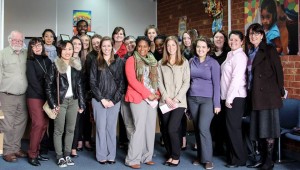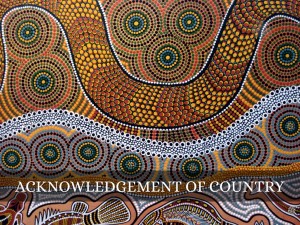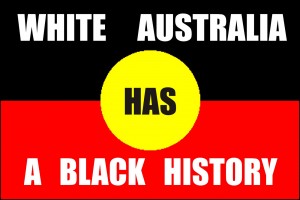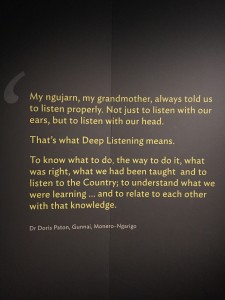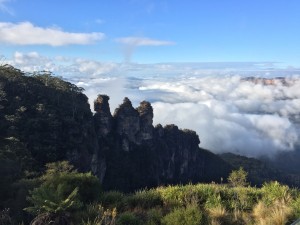For my Australian application essay, I used this quote by Judith Thurman:
“Every dreamer knows that it is entirely possible to be homesick for a place you’ve never been to, perhaps more homesick than for familiar ground.”
This is how I have always felt about Australia, and couldn’t have been more true!
First off – hello! My name is Alex, I am an MSW student, and I am on the Child Welfare track. My current placement has specific focus of working in outpatient therapy with adolescents with trauma; I also have a focus on youth mental health and foster youth.
Most Influential Aspect Career Wise of OZ
One issue I continually see, is the gap in service with level of care. Generally speaking, the level of care we have can be either outpatient therapy or hospitalization. (For the majority – some services provide in-home care, or specific issues part hospitalization.) A lot of kiddos I see; these options aren’t right. An adolescent who is overwhelmed- whether it be from a life event, mental health, or just stressors can be further traumatized from hospitalization. On the other hand, sending someone home when they don’t or as a professional you don’t feel completely comfortable can be just as harmful.
During agency visits, we visited Frankston Youth Prevention and Recovery Care (Y-PARC) with Mind Australia. The second we were ushered into the building I immediately knew – this was the place I didn’t know I was looking for.
Y-PARC is a voluntary partial residential which they consider both prevention and recovery care (PARC). The building is set up like a dormitory – but a dormitory focused on positive mental health. There is a room filled with art supplies and adorned with artwork made there.
There is also a room with guitars and bean bag chairs that is open and inviting. Included comes gym space, private rooms, sitting areas outside in the sun – and freedom. Part of what makes these spaces so inviting is the fact they are not forced as the building has a “come and go as you please” atmosphere. All the kids are there on their own accord, and they are encouraged to continue attending school and work – and encouraged to take the time they need when they need it. They have freedom to see their friends, or spend the night at home if they want to. They tailor make their choices.
The place from top to bottom exudes trauma informed care. Trauma informed care centers around detailed thinking of ways to make a person feel safer. Small things, like the daily schedule board letting the client know what lies ahead, and the policies and procedures in order. All of the staff (who are not counselors) still work from a strength based, choice theory approach allowing the youth to guide their own recovery. [Guide – not control.]
Treating adolescents in mental health is decisively tricky. Teenagers are treated with authoritarian power by the state, yet often expected to behave like an adult in society with similar pressures. I’ve always felt that there needs to be more medium ground with letting youth take part in their treatment, but are still treated as a non adult. Mind Australia Y-PARC creates a place like that and it’s reinvigorated my passion for adolescent mental health.
A place like this would be hard to create in the States… In my experience in youth care, there is A LOT of “red tape” to get around. However, that doesn’t mean it can’t happen. I believe seeing a place like this exist will only further fuel me to help advocate for it’s existence here.
Changes need to be made in adolescent mental health and youth care services, and seeing Mind Australia reminded me why this is what I want to pursue. I would love to stay in Australia and have services like Y-PARC available, but right now that’s not possible. But at least I figured out my plans for what to do next. I feel as this helped further develop my career goals, as I was able to see a place like this exist, and work… This was said verbatim from youth during our visit – and as we all know they are the toughest critic.
Most Influential Aspect of my Goals in OZ
The truth is, social work and working in child welfare can be downright hard. Burnout, compassion fatigue, and jadedness can be very real aspects of the field. When everyday you are faced with some of the most heinous truths of human nature it can very easily get to you. No matter where you travel, child welfare is imperfect and kids can slip through the system and this trip solidified that. However, this trip also solidified the truth that wherever you go – there will also be helpers.
For me, working with others who are also wading in the trenches reinvigorates my passion for this field. (Crazy enjoys company right?) Having the opportunity to travel across the world and meet other people who are fighting for the same things fueled me in a way I never expected.
During a conversation with Suzy from Victorian Cooperative on Children’s Services for Ethnic Groups (VICSEG) I mentioned something that would never, could never happen in the states. In the gentle encouraging way social workers have a tendency to communicate in, Suzy asked “Why not? What would it take to be different?” I started to explain ways that things needed to change and then I realized Suzy was smiling at me. What I was talking about could change – but only if someone was bold enough to try to do it.
The biggest impact Australia had on me and my goals – was by making them as big as Australia! When we continue to look at a broken system the same way it becomes difficult to see ways we can fix it. By trying the view from somewhere else – all of a sudden we can start to imagine new ways to put it back together.
Most Influential Aspect Cultural Wise in OZ
I would like to pay my respect and acknowledge the traditional custodians of the land on which I traveled on, and also pay respect to Elders both past and present.
Before I can even begin to address the cultural learning aspects Victorian Aboriginal Child Care Agency (VACCA) helped teach me I felt I needed to include an “Acknowledgement of Country.”
One of the first ways we learned to show respect for Aboriginal culture and heritage is to say at the beginning of any meeting or gathering an Acknowledgement of Country. All this entails is acknowledgment that the meeting is taking place in the country of the traditional custodians.
I believe that taking a minute to ruminate over the rightful owners of the land is powerful. A brief minute (almost) daily, keeps the remembrance of the Aboriginal history fresh in everyone’s minds.
Before I visited Australia – it never occurred to me that Australia has a black history too.*
*Side note: Any person who identifies as Aboriginal – is. Being Aboriginal is not defined by skin color as it is the culture and beliefs that define the individual. “Black History” is inclusive to all Aboriginals (and Torres Strait Islanders) – no matter their skin tone.
Similar to what we are used to – level of skin pigment is impactful. In America, it was common practice for lighter skinned slaves to work inside and be considered more attractive; while darker skinned slaves were expected to work in the fields. It was also common for individuals who were mixed to struggle with identity as they were too light skinned to be considered black so they were rejected by the other slaves, and as they were half black they were rejected by white families.
Aboriginals have similar “light skin/dark skin” identity issues. Through forced colonization and a harrowing time of removing Aboriginal children and placing them white homes – culture became the mark of being an Aboriginal not skin color. Many white Aboriginals struggle with identity because people don’t see them as Aboriginal. One person I spoke with commented on how growing up as a white Aboriginal made him feel like he constantly had to prove himself.
He talked about one time he was dressed and painted in traditional Aboriginal clothing for a ceremony, and a person said “I know that you are Aboriginal” pointing to his darker skinned friends, but then they turned and pointed to him and said “but what are you?”
As an egocentric American, I’ve always felt that America has had the most racially charged history. America was not discovered, it was invaded- and taken through deceit and unfair advantage from the Native American Indians. The country was taken, then built off of the backs of slaves that white men decided to “take” as well. Our racial issues continue to stay a controversial hot topic, but our discussion of the Native Indian Americans has since died down.
During our cultural training at VACCA I realized that acknowledgment of past is one of the most healing aspects for the Aboriginals. This is why the Acknowledgement of Country is so crucial. Every single time someone takes a moment to mention the original custodians of land, it brings the issue back to the table and recognizes that a lot of pain has occurred.
What if Americans did the same?
Really.
What if instead of celebrating Thanksgiving- the real story was shared. What if instead of cheering for teams mockingly named “Redskins” – we opened sports games with an acknowledgment of land? What if instead of having a black history month acknowledgment of slavery and racial oppression was a continuous discussion? What if we acknowledged the pain our country has caused?
As much of my focus is working with trauma, I tend to view the world through that type of thinking. One important aspect of trauma work is acknowledging the power of the perception. As I have a clinical focus, I sometimes lose sight of the greater population as a whole. VACCA opened my eyes to the effect of this. If a single individuals’ recovery is greatly influenced by acknowledgment of trauma – imagine the magnitude of a whole country NOT showing acknowledgment.
When I listened to the firsthand account of the individuals from VACCA I realized much heartache has been endured, and continues to be caused by people not acknowledging the full scope of the pain that has occurred. In order to deal with the trauma of the country we have to first admit it has happened and the effects still linger.
I believe as a whole, visiting VACCA was one of the most empowering agency visits. The visit really encouraged me to think further than the “here and now” of racial and ethnic issues. The best advice from VACCA? All you have to do is two things.
- ASK
- LISTEN
Caring to learn about someone else’s culture – (acknowledgment) is one of the best tools we have.
Final Thoughts on life in OZ
G’DAY G’DAY!
My final thoughts and reflections on the program are quite simple. “I’m so glad I went.” The program catered towards my professional passions and my personal interests. I was both able to travel across the world to continue my education in pursuit of my professional passions AND play in nature as the adventurer and an explorer I love to be.
Yes, I am one of those people who keeps a bucket list. This trip helped cross off many items on my bucket list. Scuba diving around the Great Barrier Reef, seeing the Twelve Apostles, seeing the Three Sisters, gloriously hiking through the Blue Mountains, living in another country, and most importantly HUGGING A KOALA are all huge checkmarks on my bucket list. Although these are not “educationally” related I kind of think they are.
As a person who focuses on clinical work, I understand I am my own “product.” If I want to encourage others to find the best lives for themselves, I need to know how to do the same for myself. As one with wanderlust – exploring is the best life for me, and I am overjoyed at the opportunity I’ve had to put that in practice.
CHEERS MATES



